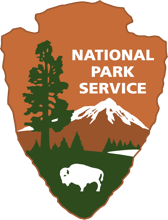
Meet Timothy and Eddie
We’re so excited to introduce you to the stars of our new podcast! Timothy is a visiting scholar from Uganda who is currently working with the Conservancy for Cuyahoga Valley National Park. He works with the Uganda Wildlife Research and Training Institute in Uganda, located in the western part of Uganda near Queen Elizabeth Park. Eddie is a field instructor at the Cuyahoga Valley Environmental Education Center. During the stay-at-home orders here in Ohio, these roommates decided to launch a podcast to share their experiences, discuss similarities and differences, and answer questions from all of you!
Listen to the Podcast
Send us your Questions!
Have a great idea for a podcast topic? Have a question for Eddie and/or Tim? Email your ideas and questions to us at connect@forcvnp.org
Podcast Transcript
Tim and Ed’s Excellent Adventure – Episode 1
May 5, 2020
Eddie: Hello everyone. My name is Eddie Lagucki, and I am here with my good friend Tim Mwesige.
Tim: Hello.
Eddie: And this is Tim and Ed’s Excellent Adventure.
(Upbeat music plays)
Eddie: We’re two conservationists and roommates employed at the Conservancy for Cuyahoga Valley National Park, exploring perspectives of conservation in Cuyahoga Valley National Park and abroad. So when I say the word abroad, you might be wondering where, so I think might be a good segue. Tim, why don’t you go ahead and introduce yourself?
Tim: Yep. Hello, I am once again Timothy, a visiting scholar from Uganda. I work with the Uganda Wildlife Research and Training Institute in Uganda. It is located in the western part of Uganda. Basically, I’m here to work at the Conservancy for Cuyahoga Valley National Park to carry out environmental education.
Eddie: Alright Tim, so I’m sure many of our listeners are familiar where Uganda is on the world map, but for those that aren’t, could you give us just a quick run down?
Tim: Of course. Uganda is in the eastern part of Africa. It is surrounded by Sudan, Kenya, Congo, Tanzania, and Rwanda in the south.
Eddie: And what are some of the greatest animals that you have there? ‘Cause I know a lot of people come and do safaris in eastern Africa. What are some of the major-
Tim: Yeah, in Uganda we have the big five.
Eddie: Yeah.
Tim: We have the lion, the buffalo, the elephant, the rhino, and the leopard.
Eddie: Man, could you imagine if we had those animals here in Cuyahoga Valley National Park? I mean, if we had a big five here in Cuyahoga Valley, I think it would have to be squirrels, turtles, red tailed hawks, bald eagles, and white tailed deer. What do you think about that Tim? Does that sound about right?
Tim: Oh it sounds weird.
Eddie: (laughs) But, if you really think about it, it is pretty much like the big five of Cuyahoga Valley National Park. Anyways, moving on to our next topic. So let me ask you this Timothy: what brought you to the Conservancy for Cuyahoga Valley National Park? What on your environmental resume resonates with you that would give you the title of conservationist?
Tim: Right, let me start with my educational background. I went to the University of Makerere, and did a Bachelor’s degree in ethnobotany. Yeah, then after that I went to the Institute Wildlife, where I started working as an instructor.
Eddie: Yeah. And what age groups were you working with as an instructor?
Tim: Yeah, we deal with students from the age of 15, moving upwards.
Eddie: Mhm.
Tim: Yeah we don’t have elementary age.
Eddie: Yeah the funny thing is, here at the Conservancy a lot of the youth that we work with are 15 and under. So, it’s definitely a bit different here. And my background on how I got here is, I received a Bachelor’s degree in biology from Bowling Green State University. I also did entomology research there, and incorporated some GIS work with that. If you’re an environmental scientist and understood what I just said, cool, if not, that’s all right, it’s not a big deal. And I also have a Master’s degree from Colorado State University, and I studied, in my capstone project, reformed poaching communities in Rwanda. And this is actually how Timothy and I came up with this podcast idea, is we both have this cross-cultural experience, where I spent some time abroad living in Rwanda, which, if you’re not familiar with, is directly next to Uganda. So the cultural differences are not that great, but from Uganda to America, the cultural differences are huge. And we see this podcast as a great opportunity as somebody coming from Uganda to America, and somebody from America, that has somewhat of an understanding of African culture, to come together and talk about conservation. ‘Cause there’s so many hot topics in conservation right now, whether it be poaching, trophy hunting, or preservation of natural resources for the benefit of themselves rather than humans. And I think that this podcast is gonna be a great way for both of us to give our perspectives on these different hot topics in conservation. Because they’re definitely not going away as time goes on. So with that being said, Timothy, how have you specifically benefitted from conservation?
Tim: Yeah, that is a lot to talk about, conservation, and specifically how I have benefitted from conservation. In the first place, I got a job.
Eddie: Yeah.
Tim: Yup, conservation gives me a job, ‘cause I am able to teach about conservation at an Institute of Wildlife. And secondly, it has given me so many opportunities. Getting an opportunity to come to the United States of America.
Eddie: Yeah, I bet you didn’t expect it to be (laughs) during a lockdown, but I think we’re still getting a pretty good experience here.
Tim: Yeah, this gives me a chance to come and study about conservation and how the Americans are carrying out conservation of the Cuyahoga Valley National Park, so that I can relate to how we do conservation in Uganda. In the third place, conservation makes me embrace the value of natural resources. It gives me this sense of liking the natural resources around us, and how best human beings can preserve these resources for sustainable development.
Eddie: Yeah, I can definitely say that I fell in love with conservation at a young age. I was the kind of kid that was always out in the woods with a little plastic container and probably a net, just looking to catch and observe just about anything. And the outdoors has always kind of been my happy place, ever since I was younger. And I now do a ton of wildlife photography, and that is my way of sharing my love of conservation with the world. I’ve published research papers in the past, like I said, on entomology, but I didn’t quite get that same love for science like I did when I get to share pictures with people that immediately elicit a response, as opposed to somebody reading an entire 20-page research paper and then going, “Oh, that’s interesting.” I’m not much of a lab work guy, I gotta be out in the woods and I think that’s what both brought us here, because we both one, love conservation, two, love working with kids. And another thing I really value about conservation comes back to what you said, is finding a way to balance human development with natural resources preservation
Tim: Mhm.
Eddie: And in the past, in the United States, we haven’t done the greatest job of preserving our resources, but that is also why we have our national parks, to help preserve some of those resources. And as we’re gonna be talking about in some of our future podcasts, Cuyahoga Valley National Park’s done a pretty darn good job of expanding the park over time, and protecting lands. For example, the old salvage scrap yard that got turned into a beaver marsh that is filled with so much wildlife. I will go there just about every morning, our house is about a mile from the beaver marsh, and I’ll take pictures. And to be able to go to a place that was one considered unsalvageable and there was no wildlife at all, to be restored within a 40-year period, that’s the kinds of things I love. You can create a building in the middle of a downtown in about a year, and it’ll be beautiful, but it was made by humans. There’s that natural algorithm of how things are made, and I find that so beautiful and I really think that is what gets me to love conservation so much. That being said, we have some content already created for this podcast and topics that we want to cover, but we would also love to have your insight or any questions that you might have for me or Tim specifically on Tim and Ed’s Excellent Podcast. We will also be representing the Conservancy for Cuyahoga Valley National Park throughout the podcast, and if you have any park-related or Conservancy-related questions we would also be happy to answer those for you as well. We don’t have much more planned for you to day on this podcast, this was our intro, and can’t wait to see you next time.
Tim: See you next time.
(Upbeat music plays)





